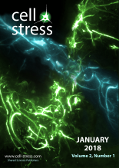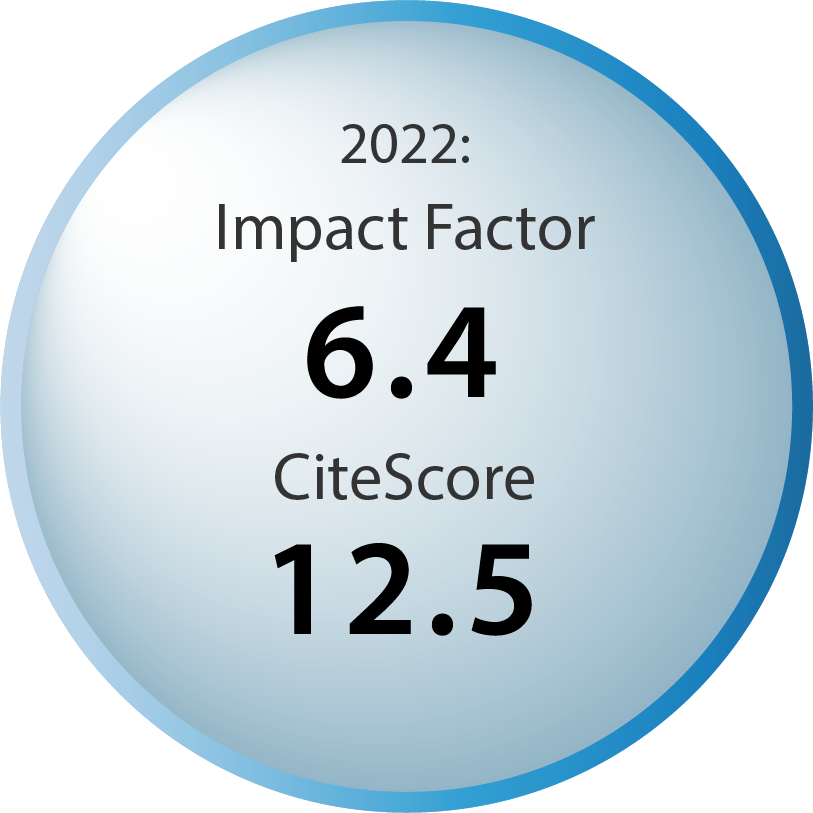Table of contents
Volume 2, Issue 1, pp. 1 - 19, January 2018
Cover: This month in
Cell Stress: Kinase signaling in the innate immune system. Fluorescence microscopic depiction of immune cell responses within the CNS upon chronic pain. Images by Centre for Nanoscale BioPhotonics (CNBP) licensed under the
CC BY 2.0 license. Image modified by
Cell Stress. The cover is published under the
CC BY 4.0 license.
Enlarge issue cover
Novel role of the SIRT4-OPA1 axis in mitochondrial quality control
Alexander Lang and Roland P. Piekorz
News and thoughts |
page 1-3 | 10.15698/cst2018.01.118 | Full text | PDF |
Abstract
Mammalian sirtuins are fundamental regulators of a plethora of cellular functions, including gene expression, proliferation, metabolism, and ultimatively cellular aging and organismal life-span. The mitochondrial sirtuin SIRT4 acts as metabolic tumor suppressor and is down-regulated in many cancer types. We showed that SIRT4 expression was up-regulated during replicative senescence and by different anti-proliferative and senescence inducing stressors, including UVB and ionizing radiation, due to inhibition of its negative regulator, microRNA miR-15b. In our recent studies we addressed the molecular consequences of increased SIRT4 expression for mitochondrial function and quality control. We demonstrated that SIRT4 reduces O2 consumption and decreases mitochondrial membrane potential in line with an increased generation of mitochondrial reactive oxygen species (mtROS). This led to the accumulation of dysfunctional mitochondria and a more fused mitochondrial network associated with a decreased mitophagic clearance. Mechanistically, our data indicate that SIRT4 promotes mitochondrial fusion in an enzymatically dependent manner through interaction with and stabilization of the dynamin-related GTPase L-OPA1, thereby opposing fission and mitophagy. Our findings provide novel insight in the role of SIRT4 as stress triggered factor that causes mitochondrial dysfunction and impaired mitochondrial quality control through decreased mitophagy, a major hallmark of aging.
MST kinases in innate immune signaling
Zhubing Shi and Zhaocai Zhou
Reviews |
page 4-13 | 10.15698/cst2018.01.119 | Full text | PDF |
Abstract
The mammalian STE20-like (MST) protein kinases are composed of MST1, MST2, MST3, MST4 and YSK1. They play crucial roles in cell growth, migration, polarity and apoptosis. Dysfunction of these kinases often leads to diseases. MST kinases are extensively involved in development and function of immune system. Here, we review recent progresses on the regulatory function of MST kinases in innate immune signaling.
Targeting Nfix to fix muscular dystrophies
Giuliana Rossi, Valentina Taglietti and Graziella Messina
Microreviews |
page 17-19 | 10.15698/cst2018.01.121 | Full text | PDF |
Abstract
Muscular dystrophies (MDs) are still incurable heterogeneous diseases, characterized by muscle wasting, replacement by fibrotic tissue, and increasing weakness, which in severe cases, such as Duchenne MD, lead to premature death. MDs are due to mutations encompassing different dystrophin-glycoprotein complex (DGC) genes, which code for structural proteins that anchor the cytoskeleton to the extracellular matrix, thus conferring myofiber stability. All mutations destabilizing this complex result in different MD forms, with varying levels of severity. Independently of the genetic defect, MDs share common hallmarks, characterized by continuous cycles of muscle degeneration, due to lack of structural support during contraction, followed by regeneration cycles by satellite cells (SCs), the canonical myogenic stem cells of adult muscle. However, dystrophic SCs generate new fibres which are also prone to degeneration so that, after many cycles of degeneration/regeneration, this cell population is exhausted and muscle is replaced by connective and adipose tissue. At this stage, any therapeutic intervention is likely to fail.
Therapeutic potential of HDAC6 in amyotrophic lateral sclerosis
Wenting Guo and Ludo Van Den Bosch
Microreviews |
page 14-16 | 10.15698/cst2018.01.120 | Full text | PDF |
Abstract
Amyotrophic lateral sclerosis (ALS) is the most common fatal motor neuron disease in adults and no effective treatments exist. Mutations in FUS are one of the genetic causes of familial ALS. We used induced pluripotent stem cells (iPSCs) derived from FUS-ALS patients to investigate the pathological mechanism. We observed hypo-excitability, cytoplasmic FUS localization and axonal transport defects of different cargoes in motor neurons differentiated from these iPSCs. Pharmacological inhibition and genetic silencing of histone deacetylase 6 (HDAC6) restored the axonal transport defects. Moreover, the disturbed association between mitochondria and the endoplasmic reticulum (ER) was also reversed by inhibition of HDAC6. The positive effects of HDAC6 inhibition were linked to an increase in the acetylation level of α-tubulin, one of the building blocks of the microtubules. In conclusion, HDAC6 inhibition could be a potential new therapeutic strategy for ALS.



